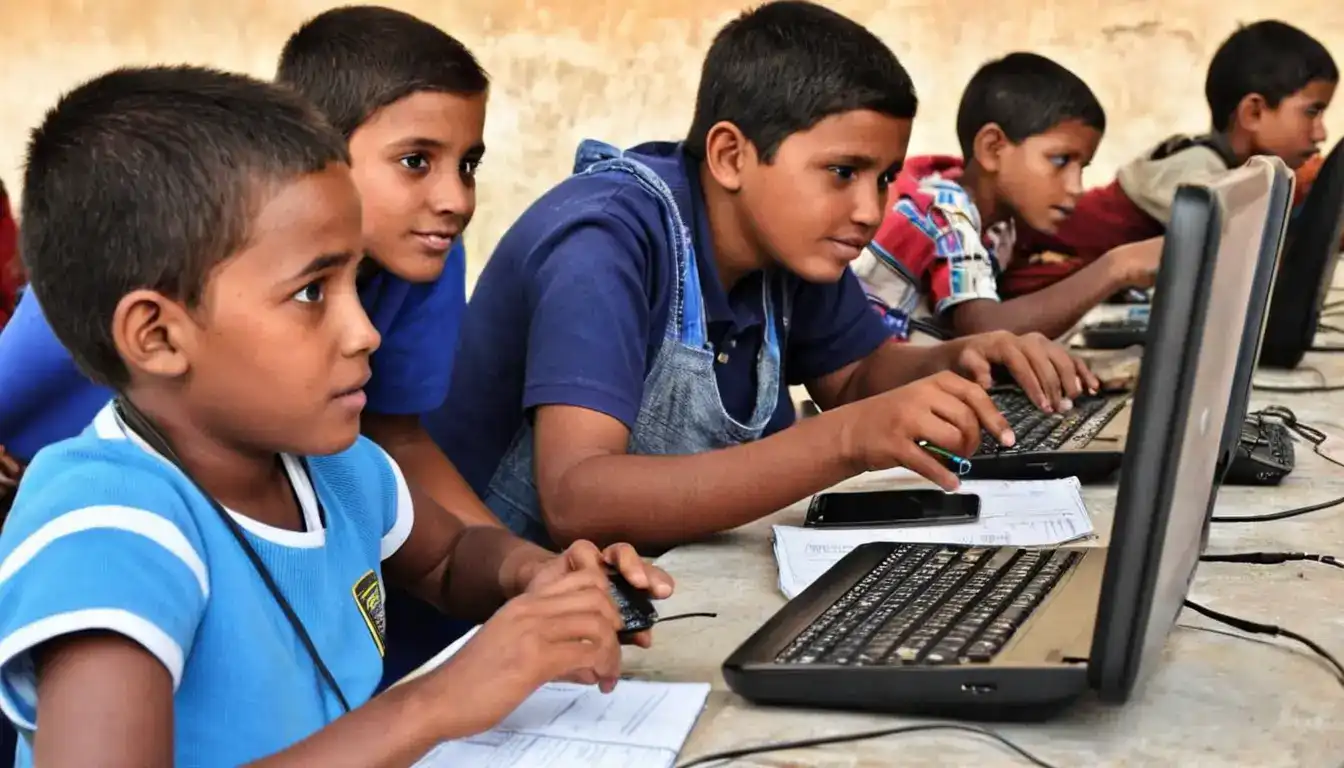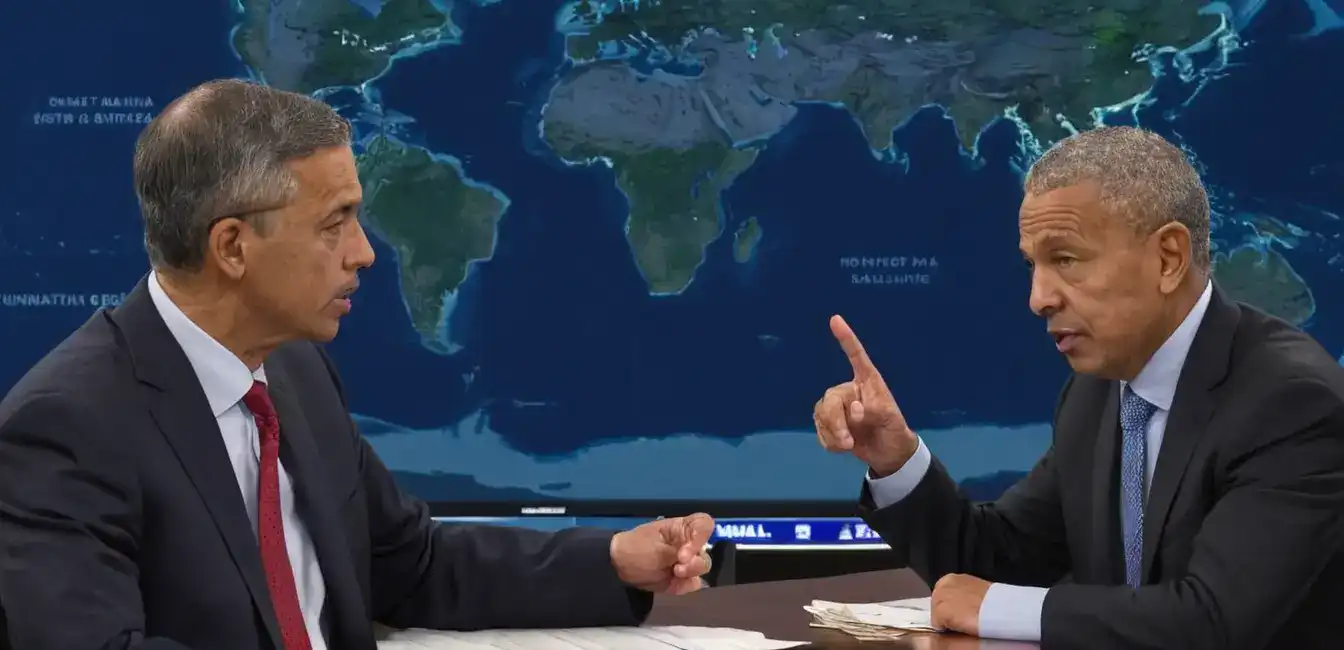Rising Goods Prices and Inflation in Various Countries: What are the Causes and What are the Solutions?
Emily Willis

Photo: Rising Goods Prices and Inflation in Various Countries: What are the Causes and What are the Solutions?
In recent times, many countries have experienced a surge in inflation, leading to rising prices of goods and services. This phenomenon has impacted the lives of people worldwide, affecting their purchasing power and causing concerns about economic stability. In this article, we will delve into the causes of rising goods prices and inflation, explore its impact on different countries, and discuss potential solutions to mitigate its effects.
Understanding Inflation and Its Causes
Inflation refers to the general rise in the price level of goods and services over a sustained period. It is typically measured as a percentage increase in a consumer price index (CPI) or similar price indices. Let's explore some key causes of inflation:
- Demand-Pull Inflation: This occurs when aggregate demand for goods and services in an economy exceeds the available supply. Strong consumer demand can lead to businesses raising prices, especially if they have the market power to do so. This is often seen in industries with few dominant players, allowing them to increase prices without losing customers.
- Cost-Push Inflation: Cost-push inflation happens when the costs of production, including raw materials, labor, or taxes, increase for businesses, leading them to pass these higher costs on to consumers in the form of higher prices. For example, an increase in oil prices can lead to higher transportation and production costs, ultimately resulting in higher prices for consumers.
- Monetary Factors: Central banks play a crucial role in managing inflation through their monetary policies. When a central bank increases the money supply in the economy at a faster rate than the growth in the supply of goods and services, it can lead to an excess of money chasing a limited number of goods, resulting in higher prices.
- External Shocks: External factors, such as natural disasters, pandemics, or geopolitical events, can disrupt supply chains and production processes, leading to shortages and higher prices. For instance, the COVID-19 pandemic disrupted global supply chains, causing bottlenecks and contributing to inflationary pressures.
- Wage-Price Spiral: When workers demand higher wages to keep up with rising prices, it can trigger a wage-price spiral. As businesses face increased labor costs, they may pass these costs on to consumers, further fueling inflation.
- Import Prices: In countries heavily reliant on imports, an increase in the cost of imported goods can contribute to inflation. This is particularly true for essential imports such as food, energy, and raw materials.
- Exchange Rate Depreciation: A weakening of a country's currency can make imports more expensive, leading to higher prices for consumers. Currency depreciation can occur due to various factors, including economic instability, high inflation, or a significant current account deficit.
Impact of Rising Goods Prices and Inflation
The surge in inflation and goods prices has had far-reaching consequences for individuals, businesses, and economies as a whole:
- Eroding Purchasing Power: Rising prices mean that consumers can buy fewer goods and services with the same amount of money. This effectively reduces their purchasing power and can significantly impact their standard of living, especially for low-income households.
- Increased Cost of Living: Inflation leads to an overall increase in the cost of living. Everyday expenses, such as food, transportation, utilities, and housing, become more expensive, squeezing household budgets and forcing individuals to make difficult financial decisions.
- Impact on Businesses: Inflation can disrupt business operations and profitability. Companies may face higher production costs, and if they are unable to pass these costs on to consumers, their profit margins suffer. Inflation can also affect investment decisions, as businesses may opt to delay expansion or hiring due to economic uncertainty.
- Distorted Investment Decisions: In highly inflationary environments, individuals may be incentivized to spend rather than save, as money loses value over time. This can lead to distorted investment decisions, with people potentially taking on more risk in search of higher returns.
- Impact on Lenders and Borrowers: Inflation can adversely affect lenders, as the real value of the money they are owed decreases over time. On the other hand, borrowers may benefit from inflation, as the real value of their debt decreases.
- Social and Political Unrest: Prolonged or high inflation can lead to social and political instability. Rising prices, especially for essential goods, can fuel discontent and protests, particularly in countries with a history of economic inequality or political turmoil.
Country-Specific Impact and Responses
The impact of rising goods prices and inflation varies across countries, and governments have responded in different ways to address the challenges:
- United States: The US has experienced persistent inflation, with the Federal Reserve raising interest rates to curb price increases. The surge in inflation has impacted American households, leading to higher costs for essentials like food, energy, and housing. The US government has implemented stimulus packages to provide relief to families and support economic recovery.
- United Kingdom: Brexit, alongside the pandemic, has contributed to supply chain disruptions and rising import costs in the UK, fueling inflation. The Bank of England has raised interest rates and the government has provided energy bill discounts and tax cuts to ease the burden on households.
- European Union: Inflation in the EU has been driven by energy prices and supply chain issues. The European Central Bank has ended its asset purchase program and is expected to raise interest rates, despite concerns over the impact on heavily indebted countries like Italy and Greece.
- China: China has experienced moderate inflation, with the government focusing on structural reforms and long-term growth. The country's zero-COVID policy has disrupted supply chains and impacted global trade, contributing to inflationary pressures worldwide.
- India: India's inflation has been fueled by rising food and fuel prices. The Reserve Bank of India has raised interest rates and the government has offered subsidies and tax breaks to ease the burden on consumers.
- Developing Countries: Many developing countries, particularly those reliant on imports, have been hit hard by rising inflation and goods prices. This has led to social unrest and political instability in some cases, as governments struggle to balance the need for economic growth with the challenges of rising prices.
Strategies to Address Rising Goods Prices and Inflation
To mitigate the impact of rising goods prices and inflation, various short-term and long-term strategies can be employed:
- Monetary Policy Responses: Central banks play a pivotal role in managing inflation. They can employ contractionary monetary policies, such as raising interest rates, to curb demand and slow down economic growth, thereby easing inflationary pressures.
- Fiscal Policy Measures: Governments can implement fiscal measures to provide relief to households and businesses. This could include temporary tax breaks, subsidies, or direct cash transfers to help ease the burden of rising prices.
- Supply Chain Resilience: Strengthening supply chains can help mitigate the impact of disruptions on goods prices. Diversifying supplier bases and developing more resilient production networks can ensure a consistent flow of goods and services.
- Wage and Price Controls: In extreme cases, governments may intervene to control wages and prices. However, such measures can lead to distortions in the market and are typically seen as a last resort.
- Energy Price Stability: Given the significant impact of energy prices on inflation, ensuring stable and affordable energy supplies is crucial. This may involve diversifying energy sources, investing in renewable energy, and promoting energy efficiency.
- Structural Reforms: Addressing structural issues, such as labor market rigidities or inefficient production processes, can help improve productivity and reduce inflationary pressures over the long term.
- International Cooperation: Global inflationary pressures often require global solutions. International cooperation among central banks and governments can help address shared challenges, such as supply chain disruptions or energy price volatility.
Long-Term Strategies for Sustainable Price Stability
While short-term measures are crucial to address urgent inflationary pressures, long-term strategies are essential for sustainable price stability:
- Inflation Targeting: Central banks can adopt inflation targeting frameworks, which involve setting a specific inflation rate as a target and using monetary policy tools to achieve it. This provides clarity to businesses and households, helping them plan for the future.
- Independent Central Banks: Ensuring the independence of central banks is vital, as it allows them to make decisions based on economic considerations rather than political interests. Independent central banks are better positioned to implement effective monetary policies.
- Structural Reforms and Market Liberalization: Removing barriers to market entry, promoting competition, and reducing regulatory burdens can enhance productivity and efficiency, helping to keep prices stable over the long term.
- Education and Skill Development: Investing in education and skill development can enhance labor productivity and adaptability, making the economy more resilient to inflationary shocks.
- Fiscal Discipline: Governments should exercise fiscal discipline to avoid excessive money creation and debt accumulation, which can fuel inflation. This includes responsible borrowing, prudent spending, and effective debt management.
Conclusion
Rising goods prices and inflation have far-reaching consequences for individuals, businesses, and economies worldwide. While the causes of inflation are multifaceted and vary across countries, the impact is felt by all. To address this challenge, a combination of short-term and long-term strategies is necessary. Central banks and governments have a crucial role to play in managing inflation and providing relief to those affected. Additionally, structural reforms, supply chain resilience, and international cooperation are key components of a comprehensive approach to mitigating the impact of rising prices.
By implementing thoughtful policies and fostering a sustainable economic environment, countries can better navigate the challenges posed by inflation and work towards achieving price stability, thereby improving the well-being and prosperity of their citizens. A balanced and proactive approach to inflation management is essential for maintaining economic stability and fostering inclusive growth in the long run.
Latest ✨
View AllArtificial Intelligence (AI) has evolved rapidly from science fiction to reality, offering immense potential but also presenting significant ethical challenges.
Emily Willis
Virtual reality (VR) and augmented reality (AR) are transforming the entertainment industry by offering immersive experiences that blur the lines between the real and virtual worlds. VR completely transports users into computer-generated environments, while AR overlays digital elements onto the real world.
Emily Willis
In today's job market, academic qualifications alone are not enough for success. Employers value soft skills such as communication, leadership, and teamwork. Educational settings provide opportunities for students to develop these skills. Strong communication skills enable effective collaboration and understanding. Presentation and public speaking skills enhance professionalism and credibility. Leadership skills involve setting goals, making decisions, and inspiring others. Teamwork skills are important for building relationships and achieving shared goals. Developing these skills in an educational environment prepares individuals for successful careers by enhancing employability and job readiness. Soft skills development is an ongoing process that promotes continuous learning and growth. By emphasizing the importance of soft skills, educational institutions empower students to succeed in a complex and interconnected world.
Emily Willis
fostering a love of reading in early childhood and provides practical tips to achieve this. It emphasizes starting early, making reading fun and interactive, integrating reading into daily activities, and addressing challenges with reluctant readers.
Emily Willis
Business
View All
August 5, 2024
The Importance of Having Insurance to Protect Yourself and Your Assetsinsurance in protecting individuals and businesses from financial losses due to unforeseen events. It explains the different types of insurance available, such as health, life, auto, homeowners, renters, disability, and liability insurance, and their benefits.
Emily Willis

August 5, 2024
How to Create Engaging Content and Convert Visitors to Customerscreating engaging content to attract and retain customers in the digital age. It provides strategies for understanding the audience, setting content goals, creating high-quality content, using storytelling and emotional connection, and optimizing content for conversions. It also covers content formats and distribution, measuring and analyzing content performance, and building relationships with influencers and user-generated content.
Emily Willis

August 4, 2024
How to Build a Strong Brand Identity for Your BusinessBuilding a strong brand identity is essential for business success as it helps differentiate you in the market, connect with your audience, and build loyalty. Key steps include understanding your target audience, defining your mission and values, developing a unique selling proposition, creating a memorable brand name and logo, choosing brand colors and typography, crafting a brand voice and messaging, ensuring a consistent brand experience, leveraging visual content.
Emily Willis
Economy
View Allchallenges and opportunities presented by economic uncertainty and explores strategies that governments and businesses can implement to mitigate risks, ensure stability, and pave the way for future success.
Read MoreGlobal inequality refers to the unequal distribution of wealth, income, and opportunities across the world, leading to economic, social, gender, and regional disparities. The consequences of this inequality are widespread, impacting social unrest, political instability, economic stagnation, and environmental degradation.
Read MoreDiscover the hidden connections that drive global stock markets. Explore stock correlations, their impact on diversification and risk, and how to calculate them. Learn how to apply this knowledge to your investment strategy and uncover secrets to making more informed decisions.
Read MoreEntertainment
View All
August 5, 2024
Music Universal Language: Connecting and Inspiring Across CulturesMusic has the power to transcend language barriers and connect people on a deep emotional level. It serves as a bridge between cultures, fostering understanding and appreciation for diversity. The universality of rhythm and melody creates a sense of unity, while the diversity of musical styles allows for exploration and creativity.
Emily Willis

August 4, 2024
Virtual Music Concerts: The Future of Live Performance?The music industry has seen significant changes in recent years, with virtual music concerts becoming a popular trend, especially due to the impact of the COVID-19 pandemic. Technological advancements have made virtual concerts more accessible and cost-effective, while also reducing the environmental impact of live events. However, challenges such as technical issues and the lack of physical presence remain. The future of virtual concerts may involve hybrid models that combine virtual and physical experiences, as well as continued technological innovation to enhance the quality of virtual performances. Building a sense of community and engagement will also be crucial for the success of virtual concerts moving forward.
Emily Willis

August 4, 2024
The Latest Music Trends, Artists Influencing Pop Culture, and How Digital Platforms Facilitate the Distribution of Music GloballyThe music industry is constantly changing due to consumer preferences, technology, and the influence of artists. Digital platforms have revolutionized music creation, distribution, and consumption, leading to genre fusion, the rise of independent artists, and collaborative projects. Influential artists like Billie Eilish, BTS, and Taylor Swift have shaped pop culture globally. Streaming services, social media, and direct-to-fan engagement have transformed music distribution. Digital platforms also promote cultural diversity and inclusivity, expand markets and revenue, and drive technological advancements. The industry is also focusing on sustainability and ethical practices. To succeed in the future, stakeholders must embrace digital transformation and champion inclusivity.
Emily Willis
Health
View AllA healthy lifestyle is crucial for enhancing overall quality of life in today's fast-paced world. It involves habits such as a nutritious diet, regular exercise, adequate sleep, stress management, and avoiding harmful substances. Benefits include improved physical health, enhanced mental well-being, increased energy levels, better sleep quality, and longevity. Implementing healthy habits gradually, staying consistent, seeking support, and monitoring progress are key steps towards a healthier lifestyle. Prioritizing a healthy lifestyle is not just about adding years to life but about adding life to years, leading to a more fulfilling and vibrant life.
Emily Willis
cultivating healthy lifestyle habits to improve overall well-being. It focuses on three pillars of well-being: nutrition, exercise, and sleep. It provides tips on how to incorporate these practices into daily routines, such as eating a variety of foods, finding enjoyable forms of exercise, and establishing a consistent sleep schedule.
Emily Willis
Heart disease is a leading cause of death globally, but early detection and prevention strategies can reduce its impact. This article discusses the importance of early detection, common risk factors, preventive measures, and lifestyle changes for heart health. Understanding heart disease, recognizing symptoms, and undergoing regular screenings are crucial. Common risk factors include high blood pressure, high cholesterol, diabetes, smoking, obesity, physical inactivity, and family history. Symptoms of heart disease include chest pain, shortness of breath, fatigue, irregular heartbeat, and swelling. Diagnostic tests and screenings include blood pressure measurement, cholesterol screening, blood glucose test, ECG, stress test, and imaging tests. Preventive measures include adopting a heart-healthy diet, regular physical activity, quitting smoking, managing stress, maintaining a healthy weight, and limiting alcohol consumption. Medications and treatment options may be necessary for individuals at high risk or diagnosed with heart disease.
Emily Willis
Trending 🔥
View All
2
3
4
5
6
7
9
10
Lifestyle
View AllSports
View AllAugust 4, 2024
The Importance of Mental Training and Psychological Strategies in Helping Athletes Reach Their Peak Performance on the Field
Read MoreAugust 5, 2024
Celebrating Sports Legends: Honoring Iconic Figures and Their Enduring Impact
Read MoreTechnology
View All
August 4, 2024
The Future of Artificial Intelligence: Opportunities and Challenges
opportunities and challenges presented by Artificial Intelligence (AI) in various sectors such as efficiency, customer experiences, healthcare, education, and economic growth. It highlights the need to address ethical considerations, job displacement, privacy issues, security risks, and regulatory challenges associated with AI.

August 4, 2024
Bridging the Digital Divide: Ensuring Everyone Has Access to Technology
we can bridge this gap and create a more inclusive digital landscape.

August 4, 2024
The Role of 5G Technology in Revolutionizing Communication
The introduction of 5G technology is set to revolutionize communication by offering faster speeds, lower latency, and increased capacity for connecting devices. This technology will impact various sectors such as healthcare, transportation, and entertainment. 5G enhances communication through faster speeds, lower latency, and increased capacity, enabling applications like remote surgery, autonomous vehicles, and high-quality streaming.

August 4, 2024
Role of Cloud Computing Technology in Modern Business
Cloud computing technology has become essential for modern businesses, offering cost efficiency, scalability, and flexibility. It enables streamlined processes, enhanced productivity, and improved collaboration among employees. Cloud computing also ensures data security, disaster recovery, and business continuity. By migrating to the cloud, businesses can streamline IT operations, enhance customer experiences, access advanced technologies, and reach a global audience. Real-world applications of cloud computing include e-commerce, healthcare, financial services, manufacturing, and education.





















